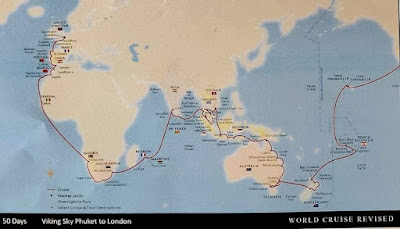How Do Plants Communicate?
Deep beneath the forest floor and high in the canopy, plants engage in a silent but sophisticated dialogue, sharing secrets and warnings through chemical signals, electrical impulses, and underground fungal networks.
Imagine walking through a forest, feeling the cool breeze and hearing the rustle of leaves. You might think the trees and plants around you are silent, but they are actually having their own conversations.
How do they do this? Let's dive into the hidden world of plant communication, where plants talk to each other in some amazing ways!
First, let's talk about how plants send signals through the air. When a plant is being eaten by insects, it can release special chemicals called volatile organic compounds (VOCs). Imagine a caterpillar munching on a leaf. The plant senses this attack and sends out VOCs into the air, like invisible smoke signals. These chemicals float over to nearby plants, warning them about the danger. The other plants then start making their own chemicals to defend themselves, making their leaves taste bad or even poisonous to the insects. It’s like a neighborhood warning system!
But plants don't just talk above ground. Beneath our feet, there’s a secret underground network made of roots and tiny fungi called mycorrhizae. These fungi connect the roots of different plants, forming a web-like structure. Through this network, plants can share nutrients and information. For example, if one tree is thirsty, it can send a message through the mycorrhizae to other trees, telling them to conserve water. It’s like the internet for plants!
Now, here’s something really cool: plants can also send electrical signals. When part of a plant gets damaged, it sends quick electrical impulses through its tissues, similar to how our nerves send messages in our bodies. These electrical signals can trigger other parts of the plant to start defending themselves. It’s as if the plant is sending an emergency alert to its own branches and leaves.
One of the most fascinating discoveries is that plants can make sounds, specifically ultrasonic clicks. Scientists found that when plants are stressed, like if they don’t have enough water, they produce tiny popping sounds. These sounds are too high-pitched for us to hear, but special microphones can pick them up. The exact mechanism isn’t fully understood, but it’s believed that these sounds come from tiny bubbles forming and bursting inside the plant’s water channels. It’s like the plant is crying out for help!
And yes, plants also use mycelia, which are the thread-like parts of fungi, to communicate. Mycelia connect different plants and trees, allowing them to send signals and share resources. This network helps plants warn each other about dangers like insect attacks or droughts. Think of mycelia as the underground cables that connect computers in a network, allowing plants to "talk" to each other even when they are far apart.
Let’s dive deeper into how this underground communication works. When a plant is under attack by pests or facing a shortage of nutrients, it can release chemical signals into the soil. These signals are picked up by the mycelia, which then transport the information to other connected plants. The receiving plants can then prepare themselves by boosting their defenses or adjusting their nutrient intake. This cooperation helps the whole plant community stay healthy and resilient.
A real-life example of this can be seen in forests where trees of different species help each other out. For instance, older, larger trees, often called "mother trees," can supply younger saplings with nutrients through the mycelial network. This support is crucial for the survival of the younger trees, especially in challenging conditions like droughts or poor soil quality.
Another fascinating aspect of plant communication involves their roots. Plants can release chemicals into the soil that affect the growth and behavior of neighboring plants. Some plants release allelopathic chemicals that inhibit the growth of potential competitors, ensuring they have enough resources for themselves.
On the other hand, some plants release chemicals that attract beneficial microbes or fungi, which help them absorb nutrients more efficiently.
In addition to these chemical and electrical signals, plants also respond to physical stimuli. For example, when a vine touches a surface, it can sense the contact and start wrapping around the object for support. This touch-sensitive behavior is another way plants interact with their environment.
So, the next time you walk through a forest or garden, remember that the plants around you are far from being passive, silent organisms. They are actively communicating, sharing resources, and responding to their environment in complex and fascinating ways. Whether through chemical signals in the air, electrical impulses within their tissues, or the intricate mycelial networks underground, plants are constantly engaged in a dynamic dialogue that helps them survive and thrive.
Isn't it amazing to think that the green world around us is so alive with hidden conversations?
Do you enjoy true science stories?
Thanks for reading,
George
Questions or comments: email me at gsranko@gmail.com
.jpg)




